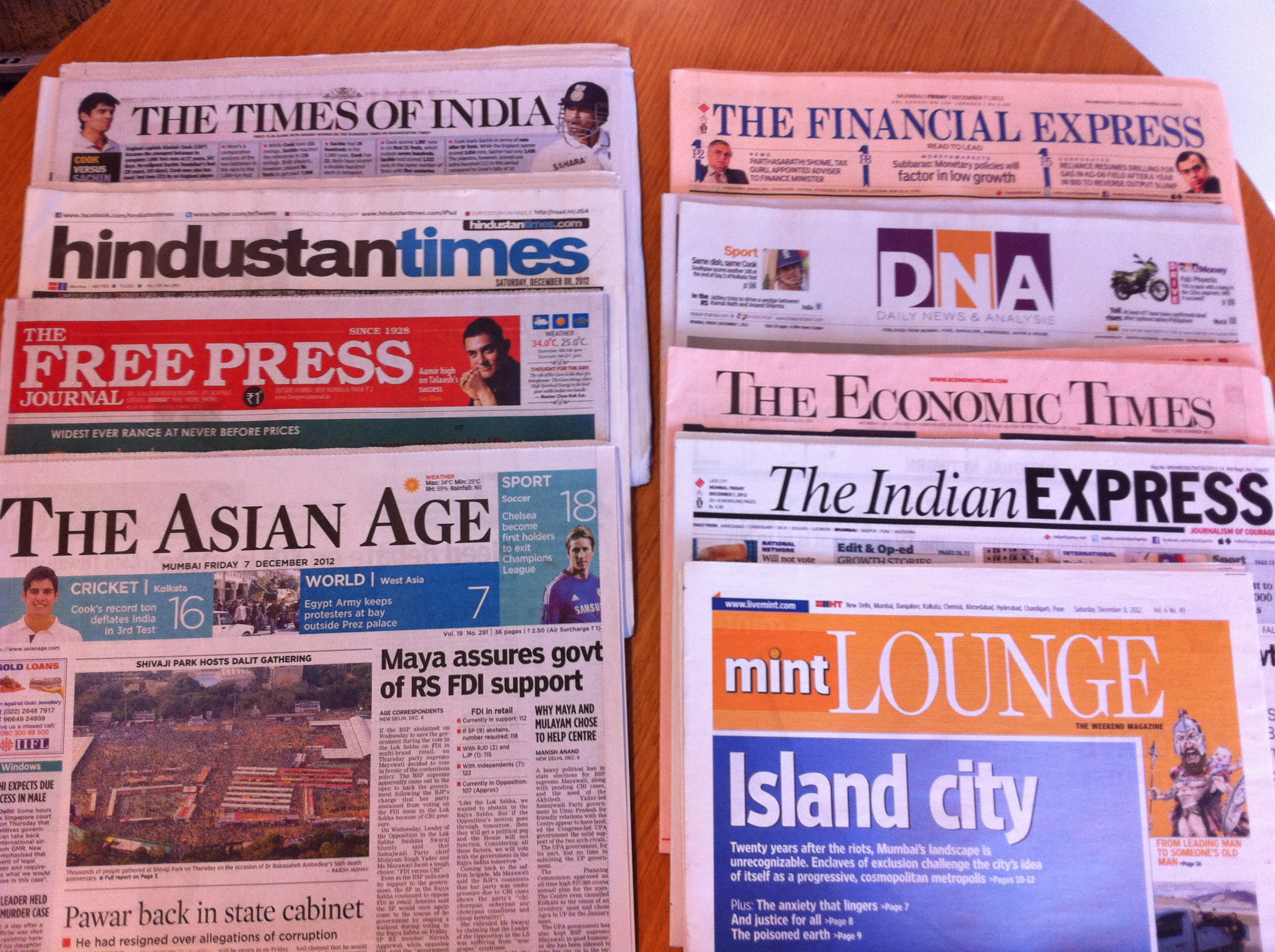
Trivia – which newspaper listed has the highest circulation?
a) The Times of London
b) The New York Times
c) The Wall Street Journal
d) The Times of India
Ok, you probably guessed correctly letter “D” as the title of this blog post gave away the answer. However, I would assume that the average person on the street would answer incorrectly if they didn’t have such a clue. (The actual daily circulation numbers during the week are Times of London 400,120, The New York Times 1,586,757, The Wall Street Journal 2,092,523 and The Times of India 3,140,000). Yet for many PR agencies and organizations, generating coverage in the Times of India wouldn’t nearly hold the same traction as the other three outlets mentioned.
Obviously, media relations goals should be aligned to the organization’s overall strategy. Nevertheless, I think it is worth weighing in India’s unique demographics and evolving media landscape when thinking through your overall public relations.
Earlier this month, I was able to experience “Incredible India” first-hand when I attended a media conference in Mumbai. It was truly amazing to see the masses of people and street vendors throughout the city. Mumbai makes New York City seems like the countryside!
The country surely has many challenges (Ed Luce brilliantly highlights these challenges in his book In Spite of the Gods). One cannot feel overwhelmed by the poverty and slums. But India also has many positives going for it, including a young populace. Over 50% of Indians are under 25; in 2020 the median age in India will be 29. This fact, together with India’s economic growth in recent years, explains why Indians are becoming more connected. India has the second most Facebook users behind the United States. In an interesting piece entitled Predicting the Indian Market for 2013: How Will Apple, Google, Facebook, Samsung and Amazon Fare?, Vinodh Bhat looks at why India is an ideal country for consuming mobile content and why this will accelerate in the years ahead.
As a result of some of these demographic attributes, India is defying many of the trends in the media space that developed western countries are facing. While publications like The Rocky Mountain News and Oakland Tribune in the United States are resting in peace at the graveyard, India has seen an explosion of new outlets in recent years. Within business publications for example, Mint newspaper was launched in collaboration with the Wall Street Journal in 2007, Fortune India started in 2010 and Forbes India hit the newsstands in 2009, among others. These three outlets have established strong readership numbers in their short respective existences. Wikipedia’s entry for Newspapers in India reveals a massive overview of different publications. Newspaper sales and mobile in-take continue to rise. In contrast, visit the web site Newspaper Death Watch to see a far different reality in the United States.
Visibility in these Indian outlets reaches a range of different socio-economic classes. While there is obvious and heart-breaking poverty in India, there is also considerable wealth. India has 61 billionaires according to Forbes’ blogger Naazneen Karmali. The country produces about twice as many engineering and computing graduates as America, according to a piece in The Economist. In addition, Indian expats around the world still flock to their home media outlets. According to the 2010 US Census, Indian Americans (over 3 million people; 1 percent of the American population) had the highest household income of all ethnic groups in the United States. Indian Americans are far more educated than the American average.
My suggestion: don’t overlook a country like India in your media relations efforts. Perhaps there will be a day in the future when clients make the Times of India a priority to the same degree they would the New York Times!
